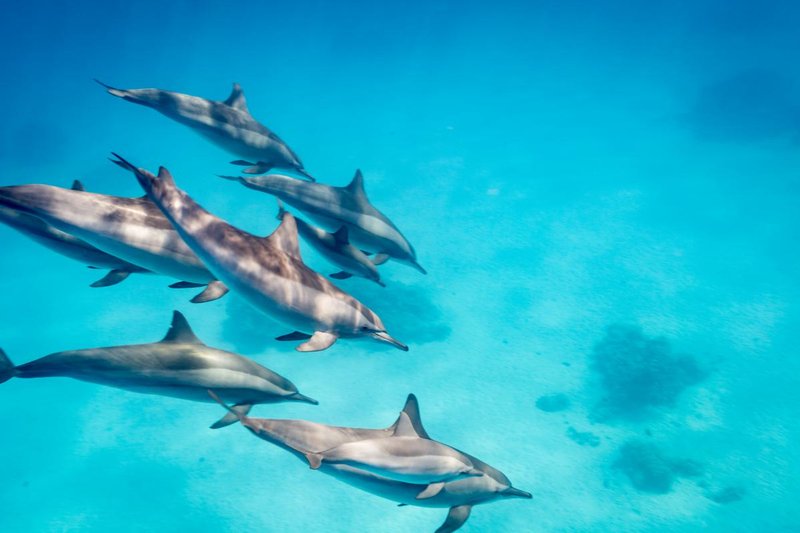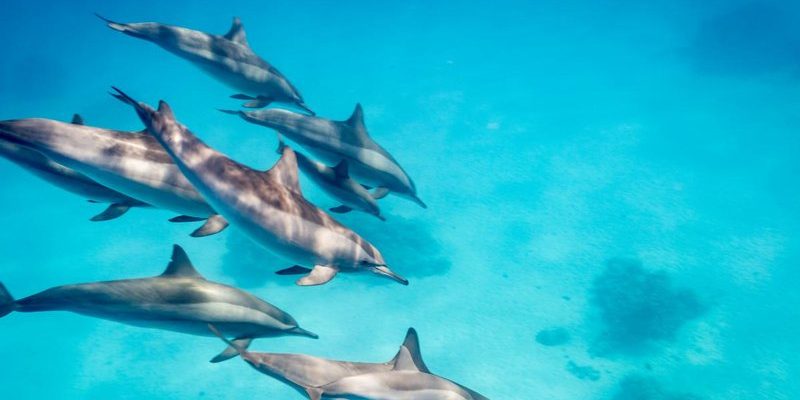
Spinner dolphins, known scientifically as *Stenella longirostris*, prefer warmer waters. You might think of them like sun-seeking beachgoers, happily making their homes in tropical and subtropical oceans around the globe. But their range isn’t limited to just one spot; these dolphins enjoy a variety of habitats. In this article, we’ll cover their favorite locations, the characteristics of their habitats, and what makes these places so special for spinner dolphins.
Oceans: The Primary Home of Spinner Dolphins
The primary habitat of spinner dolphins is, without a doubt, the open oceans. They thrive in warm waters, typically found in tropical and subtropical regions. Imagine sprawling blue horizons with gentle waves lapping at the shore—this is where you’ll likely find spinner dolphins.
These dolphins are commonly spotted in areas like the Pacific Ocean and the Indian Ocean. Some of their favorite spots include the Hawaiian Islands and the coast of Mexico. They often prefer shallow waters near coral reefs and islands, which are rich in food resources. The abundance of fish and squid in these regions helps fuel their energetic lifestyle.
Let’s not forget about their social nature! Spinner dolphins are known for their playful behavior, and you might see them swimming in pods of 10 to over 100 individuals. This social structure helps them communicate and hunt more effectively, showcasing the importance of their ocean habitats for their survival.
Coastal Areas: A Playground for Spinner Dolphins
Along the coastline, spinner dolphins enjoy the benefits of protected bays and inlets. These areas provide a safe haven from predators and rough seas, making them ideal spots for resting and socializing. Picture serene beaches with crystal-clear water—this is where spinner dolphins gather to have fun!
One of the most famous places to view them is in Kona, Hawaii. Here, they often come close to shore, allowing snorkelers and divers to experience their acrobatics up close. Spinner dolphins in these coastal regions often engage in behaviors like leaping, spinning, and riding the waves. Watching these dolphins in action is like witnessing nature’s own live performance!
Unfortunately, coastal areas can be threatened by human activity. Pollution and development can impact these delicate ecosystems, making it vital for us to take steps to protect them.
Habitats in Offshore Waters
While spinner dolphins enjoy coastal areas, they are also found in offshore waters. These waters are deeper than coastal regions and provide a different set of opportunities and challenges for the dolphins. In these offshore environments, spinner dolphins often hunt for larger fish and squid, which thrive in the nutrient-rich waters.
The habitats in offshore waters can play a significant role in the dolphins’ feeding patterns. They often dive to considerable depths to catch their prey, showing off their remarkable diving abilities. When you think of spinner dolphins, it’s easy to visualize them leaping above the waves, but underwater, they are nimble hunters—like acrobats of the sea.
This highlights the importance of maintaining healthy offshore ecosystems. Overfishing and climate change can disrupt these habitats, which could impact the spinner dolphins’ food supply and overall well-being.
Rivers: A Rare Habitat
You might be surprised to learn that spinner dolphins can sometimes be found in river estuaries. These locations are where freshwater from rivers meets the saltwater of the ocean, creating a unique blend of habitats. While it’s less common for spinner dolphins to thrive solely in rivers, they are known to venture into these areas, especially in regions with expansive coastal habitats.
One notable example is the Amazon River estuary, where dolphins may hunt or socialize. In these mixed environments, spinner dolphins can find food while taking advantage of the sheltered waters. However, they don’t typically reside there permanently, unlike some freshwater dolphin species. When they do visit, it’s typically for short periods, illustrating their adaptability.
This brings a fascinating aspect to the discussion of spinner dolphins—their ability to use different habitats when it suits their needs. It underscores the interconnectedness of marine and freshwater ecosystems, reminding us of the importance of protecting all water bodies from pollution and development.
Conservation and Challenges
Like many marine species, spinner dolphins face several challenges due to human activities. The increasing pressures from fishing, habitat destruction, and pollution can disrupt their natural habitats. Also, the noise pollution from boats and commercial activities can impact their communication and social behaviors.
Conservation efforts are vital for ensuring that spinner dolphins continue to thrive in their natural environments. Marine protected areas help safeguard essential habitats and provide safe havens for these playful creatures. It’s crucial to support initiatives that limit harmful activities and promote sustainable fishing practices.
You might wonder how you can contribute to their protection. Simple actions, like reducing plastic use, participating in beach clean-ups, and supporting marine conservation organizations, make a significant difference.
In summary, spinner dolphins are enchanting creatures found primarily in the warm waters of the world’s oceans. Their habitats range from tropical coastal areas to offshore waters and even river estuaries, showcasing their adaptability and vibrant social nature. Protecting the environments that spinner dolphins inhabit is not just essential for their survival but also for the health of our oceans as a whole.
So, the next time you spot a dolphin leaping through the waves, remember the beauty and complexity of their habitats. By working together to care for our oceans and waterways, we can help ensure that spinner dolphins continue to spin and dance through the sea for generations to come.

